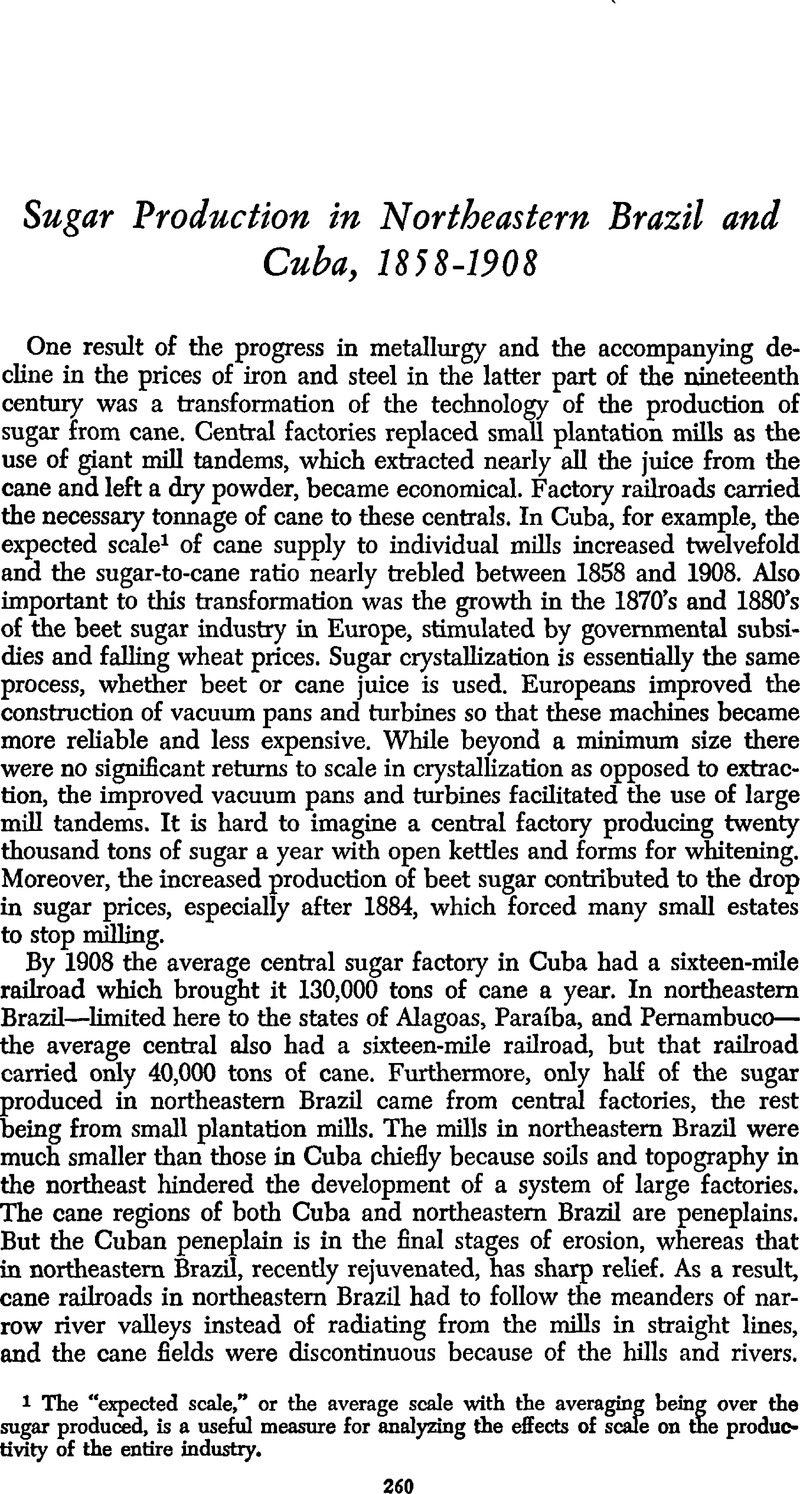Article contents
Sugar Production in Northeastern Brazil and Cuba, 1858–1908
Published online by Cambridge University Press: 11 May 2010
Abstract

- Type
- Summaries of Doctoral Candidates
- Information
- Copyright
- Copyright © The Economic History Association 1975
References
1 The “expected scale,” or the average scale with the averaging being over the sugar produced, is a useful measure for analyzing the effects of scale on the productivity of the entire industry.
2 Sugar production in Hawaii and Puerto Rico expanded because full exemption from the tariff was in effect a subsidy nearly equal to the port-of-exit price of sugar shipped to the United States from Cuba and Brazil.
3 Prices are measured in equivalents to United States gold dollars at prevailing exchange rates. Wholesale prices in the United States were about the same in 1908 as in 1858.
4 The relative ease of planting and harvesting cane on level ground also raised productivity in Cuba.
- 7
- Cited by


